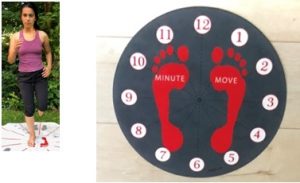If you sit for any amount of time whether in front of a desk, on a couch, in a car or a plane, we all at some point experience some degree of discomfort until we fidget and move around. For the vast majority of us and for the majority of times, this fidgeting is subconscious as we don’t even realize that we just crossed our legs, or that we shifted a bit more weight to the other butt cheek.

Frequently people are told that their pain is related to poor or slouched postures. The truth is that posture is very rarely the cause of pain.
What is proposed now is that there is no posture that is bad; it is uninterrupted posture that is potentially uncomfortable. Any posture that is not interrupted can eventually become painful. Even if you sit up perfectly tall, sitting uninterrupted for 2, 3 or 8 hours will eventually cause you to feel stiffness and some discomfort.
Try this experiment, turn your neck all the way to right and hold it there for one hour or so without moving it. You will no doubt feel neck discomfort at the end of the hour.

So is turning to the right bad for your neck? No, holding the posture uninterrupted would be the cause of the discomfort, not the neck position. The solution to reducing pain associated with prolonged sitting is not to get more expensive chairs, but to interrupt the posture every hour or so by taking a one-minute movement break.
A one-minute movement break is the single best solution to reduce the risks of discomfort related to prolonged sitting. The question now is: what is the best movement to do during that one-minute break?
Try jogging on the spot for one minute for every 1–2 hours of sitting. Go ahead, stand up now, and try to jog on the spot for 1 minute. Certainly stop if you feel you are unable to do it.
Most people are pleasantly surprised at their ability to jog on the spot for one minute, especially when they notice that it does not irritate their symptoms. Just in case jogging isn’t for you, you can always do a 1-minute walk on the spot.

Just in case you are in doing something that absolutely does not allow you to stand up such as driving, then try “clock pelvic rocks”.
Visualize as if you are sitting on the center of a clock. Now shift your hip to 1 o’clock and return back to the center; then to 2 o’clock and slowly back to center and repeat until you get to 12 o’clock. Then repeat counter-clockwise but this time with the eyes closed and full awareness.
There is now growing evidence that low back pain is complex, and that there is more to the pain experience than just muscles, discs and joints… there is also extensive changes in the sensorimotor cortices.
By closing the eyes and doing slow, small amplitude pelvic clock exercises one can perhaps positively alter cortical representation, thanks to neuroplasticity!

You now have 3 excellent options to immediately feel better or more importantly prevent experiencing spinal discomfort related to sitting.
- 1- minute jog on the spot
- 1-minute walk on the spot
- Clock pelvic rocks
Click here if you wish to learn several other clock exercises.

